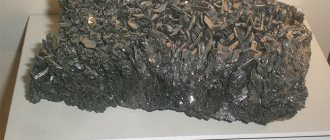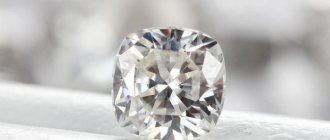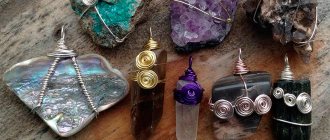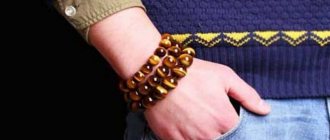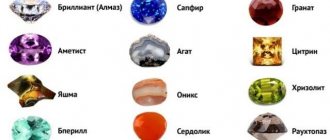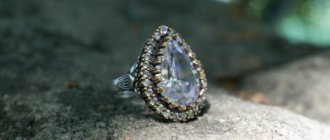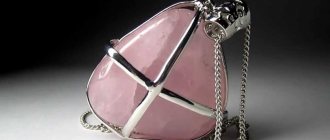What is moissanite
The name is given to a rare carbide mineral, which is colorless, shiny crystals. Gemologists, explaining what kind of moissanite stone it is, focus on the similarity of the structure with technical and synthetic jewelry samples. Natural gems are found in small quantities in individual meteorites, some corundum deposits, and kimberlites. The size of natural stone is a few millimeters. In laboratories, moissanites are grown large enough and of high quality so that they completely replace diamonds.
Most of the silicon carbides on the market are laboratory-made stones. The natural crystal was first found in 1893 in Arizona in a meteorite. Then it was possible to discover tiny hexagonal plates in the body of the meteorite. The name of the stone was given in honor of the meteorite researcher Henri Moisson. Even then, scientists doubted that the crystal was real, suggesting that it came from a researcher’s saw.
Heavenly Stone
History and origin
The first attempts to synthesize silicon carbide in the laboratory were made in 1824 by the Swedish chemist Jens Jakob Berzelius. However, this was only achieved in 1892 by the American chemist Edward Acheson.
Edward Goodrich Acheson
Jons Jacob Berzelius
Having received the first crystalline sample of silicon carbide, he describes it for a patent, after which, a year later, he receives a patent and calls the future mineral carborundum.
Exhibit – Carborundum
In 1904, Ferdinand Frederic Henri Moissan, while examining samples of a meteorite found in Diablo Canyon (Arizona, USA), he discovered hexagonal plates of silicon carbide. This was the first discovery of the mineral in nature, after which it received its name - moissanite.
Story
The mineral moissanite is extremely rare on the planet, so it is considered heavenly. It is found in ancient meteorites that arrived in our planetary system from others. On Earth and even on our luminary, conditions are insufficient for a crystal to appear naturally. It turned out that such rock is formed near giant stars and during supernova explosions. In 1905, the gem was found in an Arizona meteorite while studying fragments of a celestial stone. Moisson, who was involved in this work, soon received the Nobel Prize. The new rock he discovered was dark green and splintered. Subsequently, similar ones were found inside diamonds and in several heavenly stones.
For a long time, the properties of the gem attracted geologists, but it was not possible to produce an alternative in laboratories. It was only by 1982 that the composition was studied well enough to think through the technology. The creation of large colorless crystals was realized in 1998. From this moment on, large jewelry samples are made in quantities that satisfy the industrial sector. Gemologists often call a rare mineral a jewel of the 21st century.
Guest from meteorites
Physico-chemical characteristics
Main properties of a precious gem:
- colorlessness (or yellow, green, black color);
- greenish-gray streak;
- diamond shine, sometimes turning into metallic;
- transparency;
- hardness up to 9.5 units;
- unclear cleavage;
- axonal syngony;
- refraction up to 2.967 units.
An artificial analogue of a diamond is superior to its relative in terms of jewelry quality and physical properties. Moissanite is brighter, sparkles stronger, and refracts light a quarter better than a natural cut diamond. The play of light is more intense, a rainbow appears even in low light. The only thing in which a gem is inferior to a diamond is hardness (9.5 versus 10).
Jewel of the 21st century
Physico-chemical properties of stone
| Property | Description |
| Formula | SiC |
| Hardness | 8,5 — 9,5 |
| Refractive index | nω=2.654, nε=2.967, birefringence 0.313 (for 6H-SiC form) |
| Density (measured) | 3.218 - 3.22, average = 3.21 |
| singonia | Hexagonal |
| Kink | Conchoidal |
| Cleavage | Fuzzy by (0001) |
| Shine | Diamond to metallic |
| Transparency | Transparent |
| Color | Colorless, green, yellow, black |
Deposits and processing
Moissanite is extremely rare. There is a chance of finding a natural sample in the following deposits:
- Ermakovskoe (Murmansk region);
- Emerald mines of the Middle Urals;
- Popigaisky crater in the Krasnoyarsk Territory;
- Uakit, Oshurkovsky massif in Transbaikalia;
- Udachnaya, World in Yakutia;
- Ust-Khannyinsky intrusion, Murunsky complex in Yakutia;
- Krivbass in the Dnepropetrovsk region;
- Pokrovo-Kireevskoye in Southern Donbass;
- Zhamanshin crater in Aktobe region.
Natural specimens are very rare
Production of synthetic moissanite
A jewelry crystal of natural origin is almost impossible. The deposits contain grains up to 4 mm in size. Known deposits can yield single gems. To solve the demand problem and fill the market with quality specimens, scientists have developed a method for making crystals in the laboratory. Colorless specimens and those colored in golden, yellow, green, and black shades are created. They weigh 0.01-14 carats. The smallest ones are used in paths and halos. In the descriptions of some earrings and rings you can see a mention of large moissanites - they are used to decorate the central part of the jewelry.
Commercial cultivation of stone used for jewelry was launched in the mid-90s of the last century. Charles and Colvard began production, but the monopoly did not last long. A decade later, the market was flooded with products from Russian, Indian, and Chinese laboratories. Now there are several large companies filling the international market with high quality samples. The leader is the American enterprise 3D-sorch, where the key technologists working with moissanite were Soviet emigrants. It is based on the Leili method developed by Tsvetkov and Tairov. Work begins at room temperature (silicon carbide sublimates into crystals) and continues when heated to 2400 degrees. A 200 gram crystal with excellent shine and hardness can be grown in just 15 hours.
An alternative production is the crystallization of liquid raw materials, distillation from steam into liquid and then into a solid. The second option requires silicon-containing methane.
Russian scientists have produced grey-green transparent crystals by sublimation under elevated pressure. For now, the method is used as an experimental one.
Jewelry is made in laboratories
How to distinguish from cubic zirconia
Cubic zirconia is an industrially produced mineral that has no natural analogue.
To distinguish it from moissanite, the thermal water content is checked - the indicator is much lower. Externally, cubic zirconia and gemstone are similar, so density and hardness are checked for diagnosis.
How to distinguish moissanite from diamond
It is very difficult to distinguish these breeds on your own. It is recommended to contact a specialist to evaluate the sample on the equipment.
The gemologist will check:
- hardness (moissanite is slightly lower);
- purity (carborundum is higher due to its artificial origin);
- dispersion (carborundum has 2.5 times more);
- birefringence, presence of double ribs;
- heat resistance (moissanite changes color when heated at 65 degrees).
A laboratory stone is almost as good as a natural diamond.
Unusual valuable mineral
Moissanite in jewelry
The popularity of moissanite (carborundum) in the jewelry industry is understandable: in some characteristics the stone is even superior to a diamond .
The only drawback that does not allow replacing the precious mineral completely is its artificial origin.
View this post on Instagram
Publication from CUSTOM JEWELRY (@uvelir_moskva) Sep 30, 2019 at 1:15 PDT
Knowing how to distinguish moissanite from a diamond, you will not fall for the tricks of unscrupulous jewelers:
- Moissanite shimmers in the light with darker highlights than a diamond.
- The refractive index of carborundum is higher than that of a precious stone, and it reflects rays 20% more and shimmers.
- Moissanite does not fade when touched by fingers, unlike diamonds.
- Under a magnifying glass, the polishing lines of the edges are visible: in moissanite they are parallel to each other, while in precious stone they are in different directions. The edges of the edges of the artificial stone bifurcate from the inside.
- Finally, each gemstone has a certificate of quality with its name and main characteristics.
What does the cost depend on?
The price of a product with moissanite depends on the same indicators as other minerals:
- weight;
- color;
- processing method;
- cost of precious metal;
- production and delivery costs.
Moreover, the last point plays an important role - expensive equipment is used during production and a lot of electricity is spent . In terms of cost, moissanite is comparable to a high-quality artificial diamond.
View this post on Instagram
Posted by Moissanite Manufacturer-Vivian (@moissanite_factory) Oct 1, 2021 at 9:48 am PDT
What goes with it?
Moissanite can be combined with any precious metal. Moissanite is neutral in relation to other stones and can be used to realize any design ideas.
The main thing, like a diamond, is not to combine it with ornamental stones.
What jewelry does he look best in?
Jewelry with moissanite reveals its beauty to the fullest in jewelry:
- long earrings or studs;
- engagement or wedding rings;
- pendant on a short gold chain.
View this post on Instagram
Posted by Moissanite/Products/Jewelry (@moissanite_paradise) Mar 7, 2021 at 12:50 PST
It is appropriate to wear jewelry for the bride , for special events, dinner in a restaurant. Men can also wear jewelry with moissanite in the form of a ring or cufflinks.
Moissanite and diamond
Although artificial stone is usually inferior to natural stone, transparent moissanite is an exception. It is no different from a diamond in appearance, only slightly inferior in hardness, and refracts light much better. Among artificially produced stones, the diamond analogue is the most expensive.
Price is one of the advantages of natural stone. A diamond is a good investment whose value increases over the years. True, it is very difficult to get the full price when selling jewelry; it takes a lot of time.
Jewelry market experts advise choosing a natural diamond if you need a small stone, and moissanite for those who need a large specimen. Jewelry with a laboratory gem is ideal for events with a large number of participants, where the product can be lost. If an accident occurs, the losses will be relatively small.
Laboratory stone is not inferior to natural stone
Chemical and physical properties of moissanite
The chemical formula of the stone is SiC - silicon carbide. The hardness on the Mohs scale is 9.25, which is close to the standard diamond in this sense with its 10 units.
The color of natural moissanite is usually green or black, but in the case of a synthetic analogue, you can get any color or shade, although in 99% of cases colorless stones are used in jewelry to maximize the resemblance to natural diamonds.
The refractive index reaches 2.69 (on average 0.25 higher than that of diamonds). The dispersion, which is responsible for the play of light, also exceeds the diamond indicator: for moissanite it is 0.104, and for diamonds it is 0.044.
However, let us remind you once again that we are talking about a synthetic analogue of a natural mineral. Natural moissanite is so rare that you will not find jewelry with this stone.
How to care
With improper, irregular care, the gem loses its shine. To return it, they check for damage. You won’t be able to restore the crystal’s beauty on your own, but you can worsen the condition with unprofessional actions, so it’s better to immediately take the specimen to a jeweler. Using special equipment, he will check internal and external damage and process the jewelry with a laser. Microcracks are filled with special glue.
Store moissanite in a special box separately from other items so as not to scratch it.
If dust appears on the stone, wash the jewelry with soapy water, wipe it with alcohol, and with jewelry napkins made of non-woven material. It is forbidden to rub the object with force; use vinegar, potassium permanganate, or hydrogen peroxide for cleaning. If the contamination is severe, the item is taken to a jeweler for ultrasonic cleaning.
The stone requires maintenance
Magic properties
The gem influences human consciousness and supports in difficult periods of life. Breed:
- protects;
- calms;
- expels phobias;
- increases self-confidence;
- gives determination;
- helps to choose a direction;
- contributes to achieving goals.
Moissanite is a source of positive energy that protects against the evil eye.
Artificial stone has healing, magical properties
